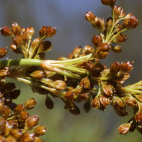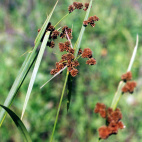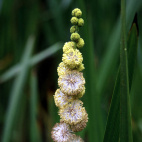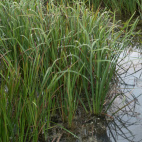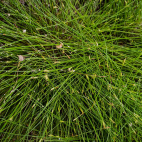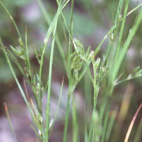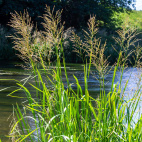Color
Availability
USDA Zone
Region
Type
Duration
Season
Germination
Soil
Sunlight
Height
Narrow Your Search
Color
Availability
USDA Zone
Region
Type
Duration
Season
Germination
Soil
Sunlight
Height
US Native Reed and Rush Seeds
-
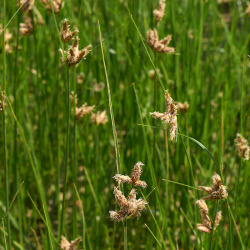 Chairmaker's Rush Seeds
Scirpus pungens
The stems of this native rush were actually used for weaving sturdy chair seats in years gone by. This perennial is a widespread species and is used extensively in wetland restoration projects.Quick Viewx
Chairmaker's Rush Seeds
Scirpus pungens
The stems of this native rush were actually used for weaving sturdy chair seats in years gone by. This perennial is a widespread species and is used extensively in wetland restoration projects.Quick ViewxChairmaker's Rush Seeds
Scirpus pungens
The stems of this native rush were actually used for weaving sturdy chair seats in years gone by. This perennial is a widespread species and is used extensively in wetland restoration projects.
$3.48 Pkt - $40.00 / Oz -
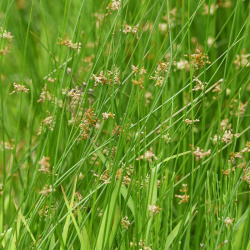 Common Rush Seeds
Juncus effusus
Native to most of North America, this prolific rush quickly grows by ponds, marshes, and wetlands. This perennial rush grows in the cool seasons, so the tiny seeds ripen in the summer and fall like red dust to the damp soil below.Quick View$3.25 Pkt - $21.00 / Oz
Common Rush Seeds
Juncus effusus
Native to most of North America, this prolific rush quickly grows by ponds, marshes, and wetlands. This perennial rush grows in the cool seasons, so the tiny seeds ripen in the summer and fall like red dust to the damp soil below.Quick View$3.25 Pkt - $21.00 / Oz -
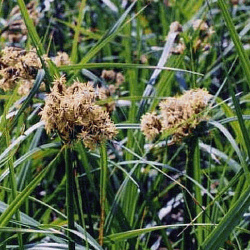 Dark Green Bulrush Seeds
Scirpus atrovirens
Because of it's aquatic nature, this native rush needs a constant supply of water. It is a common sight in wetlands, marshes, lakes, and ponds. This hardy perennial grows best in the cool seasons of spring and fall.Quick View$2.98 Pkt - $11.88 / Oz
Dark Green Bulrush Seeds
Scirpus atrovirens
Because of it's aquatic nature, this native rush needs a constant supply of water. It is a common sight in wetlands, marshes, lakes, and ponds. This hardy perennial grows best in the cool seasons of spring and fall.Quick View$2.98 Pkt - $11.88 / Oz -
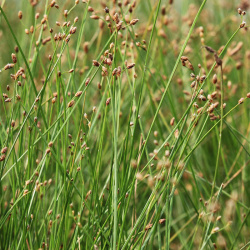 Great Bulrush Seeds
Scirpus validus
The soft stems of this native rush were once used by Native Americans for fine weaving purposes. It grows in the cool seasons and gets quite tall by the time summer arrives. Waterfowl like to feast on the ripened seed heads.Quick View$3.48 Pkt - $18.77 / Oz
Great Bulrush Seeds
Scirpus validus
The soft stems of this native rush were once used by Native Americans for fine weaving purposes. It grows in the cool seasons and gets quite tall by the time summer arrives. Waterfowl like to feast on the ripened seed heads.Quick View$3.48 Pkt - $18.77 / Oz -
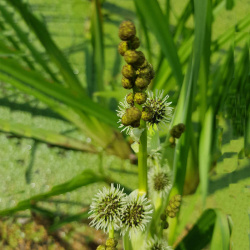 Great Bur Reed Seeds
Sparganium eurycarpum
Though it sometimes masquerades as just another grass, this wetland plant produces unusual globular white flowers that set it apart from the rest. This native plant also makes an excellent choice for dried flower arrangements.Quick Viewx
Great Bur Reed Seeds
Sparganium eurycarpum
Though it sometimes masquerades as just another grass, this wetland plant produces unusual globular white flowers that set it apart from the rest. This native plant also makes an excellent choice for dried flower arrangements.Quick ViewxGreat Bur Reed Seeds
Sparganium eurycarpum
Though it sometimes masquerades as just another grass, this wetland plant produces unusual globular white flowers that set it apart from the rest. This native plant also makes an excellent choice for dried flower arrangements.
$3.25 Pkt - $11.03 / Oz -
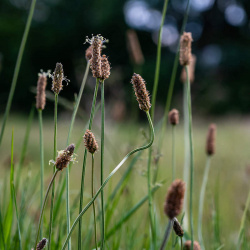 Great Spike Rush Seeds
Eleocharis palustris
This little native rush is often found growing beside creeks, rivers, and ponds. It does not become very tall but grows in the cool season, and it is an excellent food source for ducks, geese, and other creatures of the wetlands.Quick Viewx
Great Spike Rush Seeds
Eleocharis palustris
This little native rush is often found growing beside creeks, rivers, and ponds. It does not become very tall but grows in the cool season, and it is an excellent food source for ducks, geese, and other creatures of the wetlands.Quick ViewxGreat Spike Rush Seeds
Eleocharis palustris
This little native rush is often found growing beside creeks, rivers, and ponds. It does not become very tall but grows in the cool season, and it is an excellent food source for ducks, geese, and other creatures of the wetlands.
$3.96 Pkt - $58.00 / Oz -
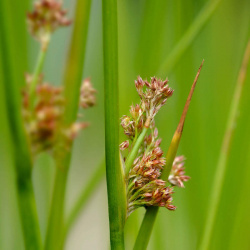 On Sale!
Path Rush Seeds
Juncus tenuis
Despite the softness of this petite rush, it is a tough species that can grow in the packed soil of pathways, trails, and other high traffic areas. This perennial does not grow very tall but produces millions of tiny seeds.Quick Viewx
On Sale!
Path Rush Seeds
Juncus tenuis
Despite the softness of this petite rush, it is a tough species that can grow in the packed soil of pathways, trails, and other high traffic areas. This perennial does not grow very tall but produces millions of tiny seeds.Quick ViewxPath Rush Seeds
Juncus tenuis
Despite the softness of this petite rush, it is a tough species that can grow in the packed soil of pathways, trails, and other high traffic areas. This perennial does not grow very tall but produces millions of tiny seeds.
$3.25 Pkt - $18.77 / Oz -
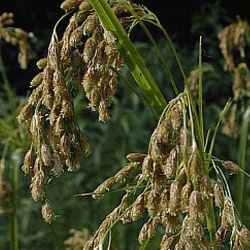 Red Bulrush Seeds
Scirpus pendulus
This adaptable native rush produces pretty nodding seed clumps on tall stems. This rush is a cool-season perennial that usually grows in wet areas, where waterfowl feed on the fresh crop of seeds each summer.Quick Viewx
Red Bulrush Seeds
Scirpus pendulus
This adaptable native rush produces pretty nodding seed clumps on tall stems. This rush is a cool-season perennial that usually grows in wet areas, where waterfowl feed on the fresh crop of seeds each summer.Quick ViewxRed Bulrush Seeds
Scirpus pendulus
This adaptable native rush produces pretty nodding seed clumps on tall stems. This rush is a cool-season perennial that usually grows in wet areas, where waterfowl feed on the fresh crop of seeds each summer.
$3.48 Pkt - $18.77 / Oz -
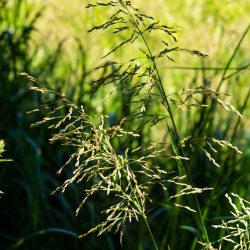 Reed Manna Grass Seeds
Glyceria grandis
An essential member of the wetland community, this native grass flourishes in marshes or along streams. It is a cool-season grass and is easy to grow, so it is a popular choice if a taller grass is desired in a wet area.Quick Viewx
Reed Manna Grass Seeds
Glyceria grandis
An essential member of the wetland community, this native grass flourishes in marshes or along streams. It is a cool-season grass and is easy to grow, so it is a popular choice if a taller grass is desired in a wet area.Quick ViewxReed Manna Grass Seeds
Glyceria grandis
An essential member of the wetland community, this native grass flourishes in marshes or along streams. It is a cool-season grass and is easy to grow, so it is a popular choice if a taller grass is desired in a wet area.
$3.25 Pkt - $21.00 / Oz -
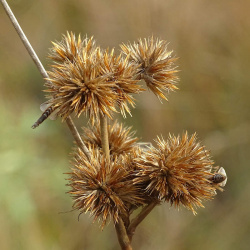 Torrey's Rush Seeds
Juncus torreyi
Because of its striking seed heads that look like pom poms, this native rush has become a popular addition to wetlands and stream banks. It is a cool-season rush, so it is actively growing in the springtime and sheds its seeds in the summer.Quick Viewx
Torrey's Rush Seeds
Juncus torreyi
Because of its striking seed heads that look like pom poms, this native rush has become a popular addition to wetlands and stream banks. It is a cool-season rush, so it is actively growing in the springtime and sheds its seeds in the summer.Quick ViewxTorrey's Rush Seeds
Juncus torreyi
Because of its striking seed heads that look like pom poms, this native rush has become a popular addition to wetlands and stream banks. It is a cool-season rush, so it is actively growing in the springtime and sheds its seeds in the summer.
$3.75 Pkt - $72.00 / Oz -
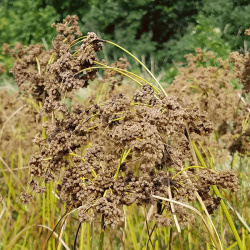 On Sale!
Wool Grass Seeds
Scirpus cyperinus
As the name suggests, this native wetland rush produces a wooly material in its mature seed heads. It makes a unique addition to a water garden or stream bank.Quick View$3.25 Pkt - $15.95 / Oz
On Sale!
Wool Grass Seeds
Scirpus cyperinus
As the name suggests, this native wetland rush produces a wooly material in its mature seed heads. It makes a unique addition to a water garden or stream bank.Quick View$3.25 Pkt - $15.95 / Oz







